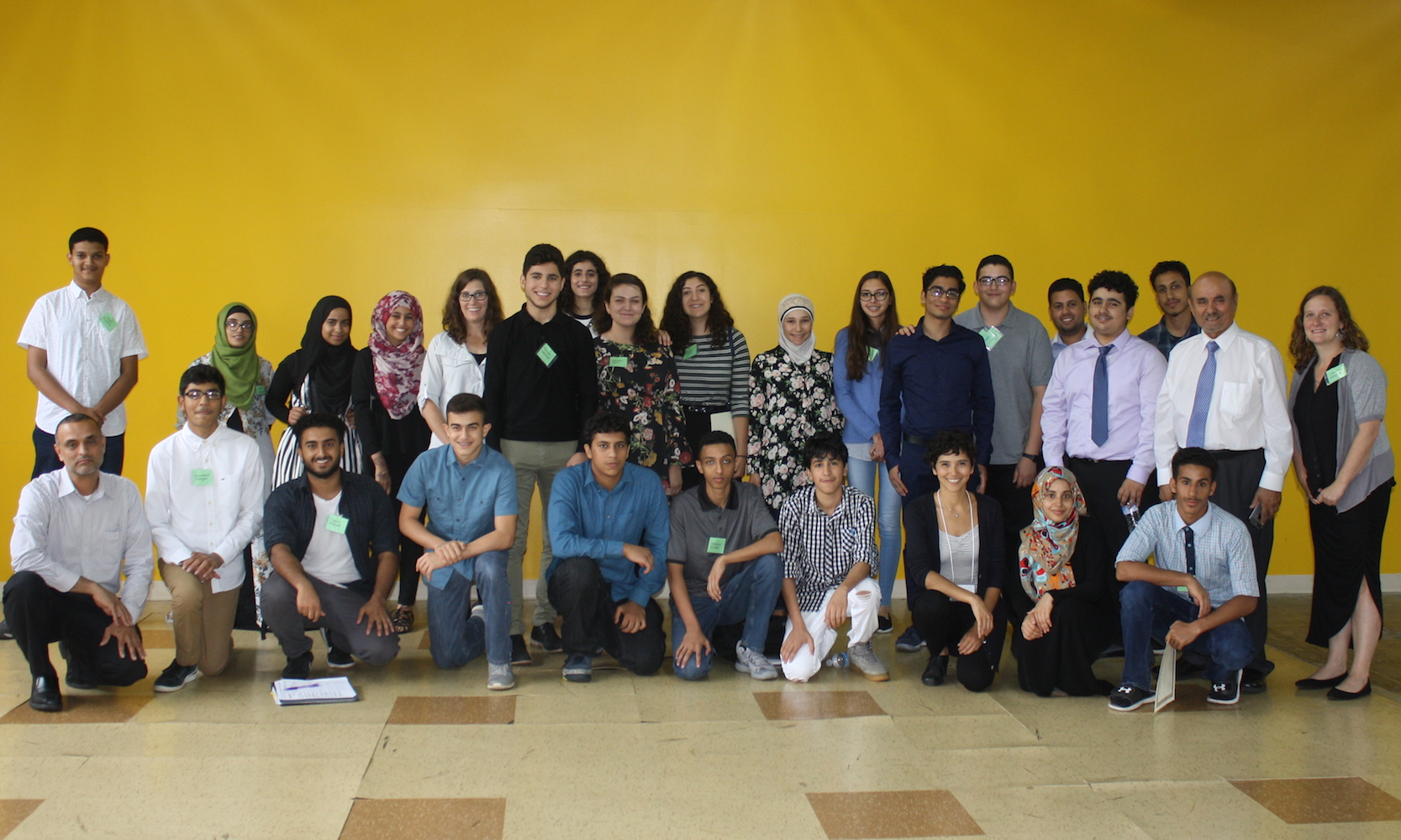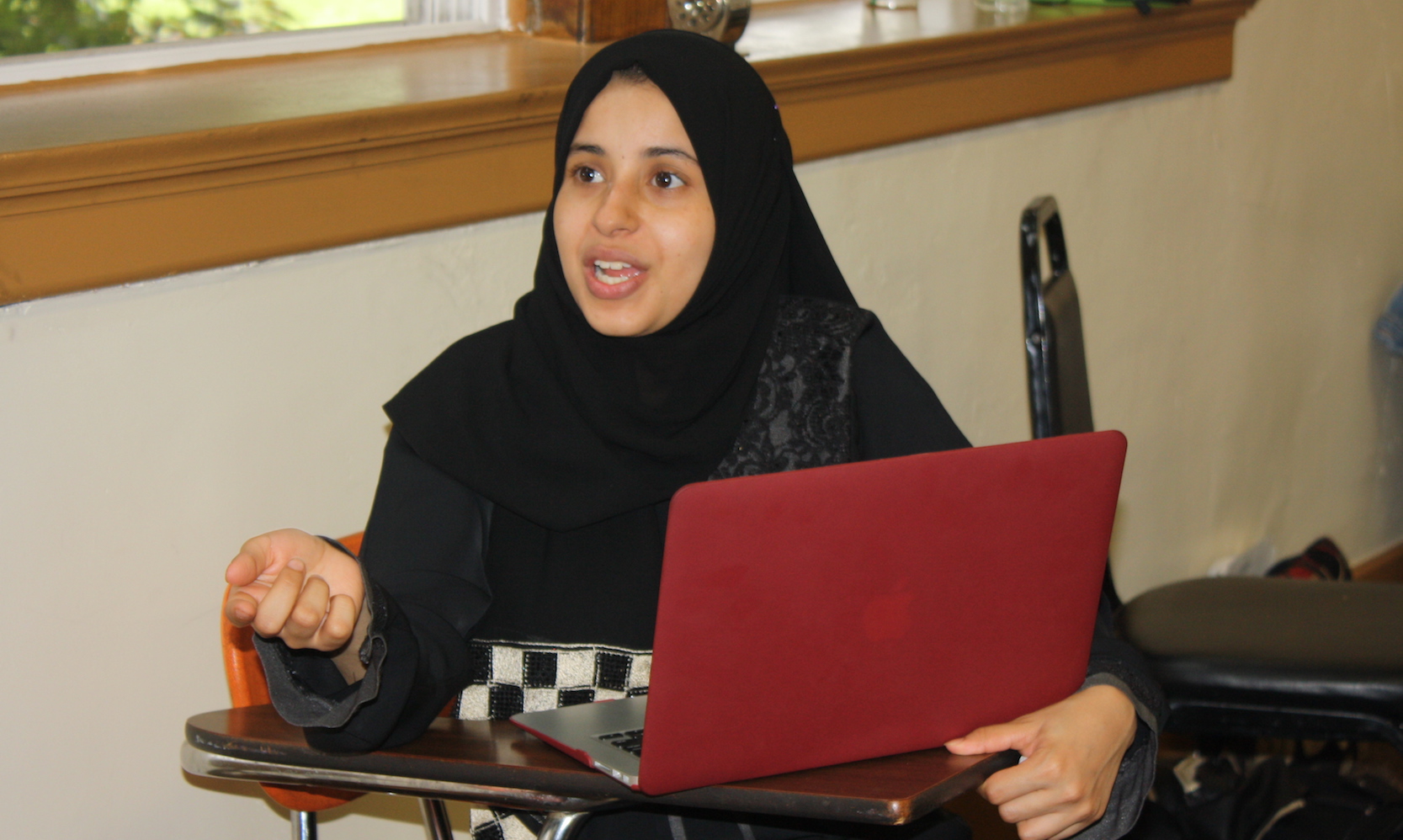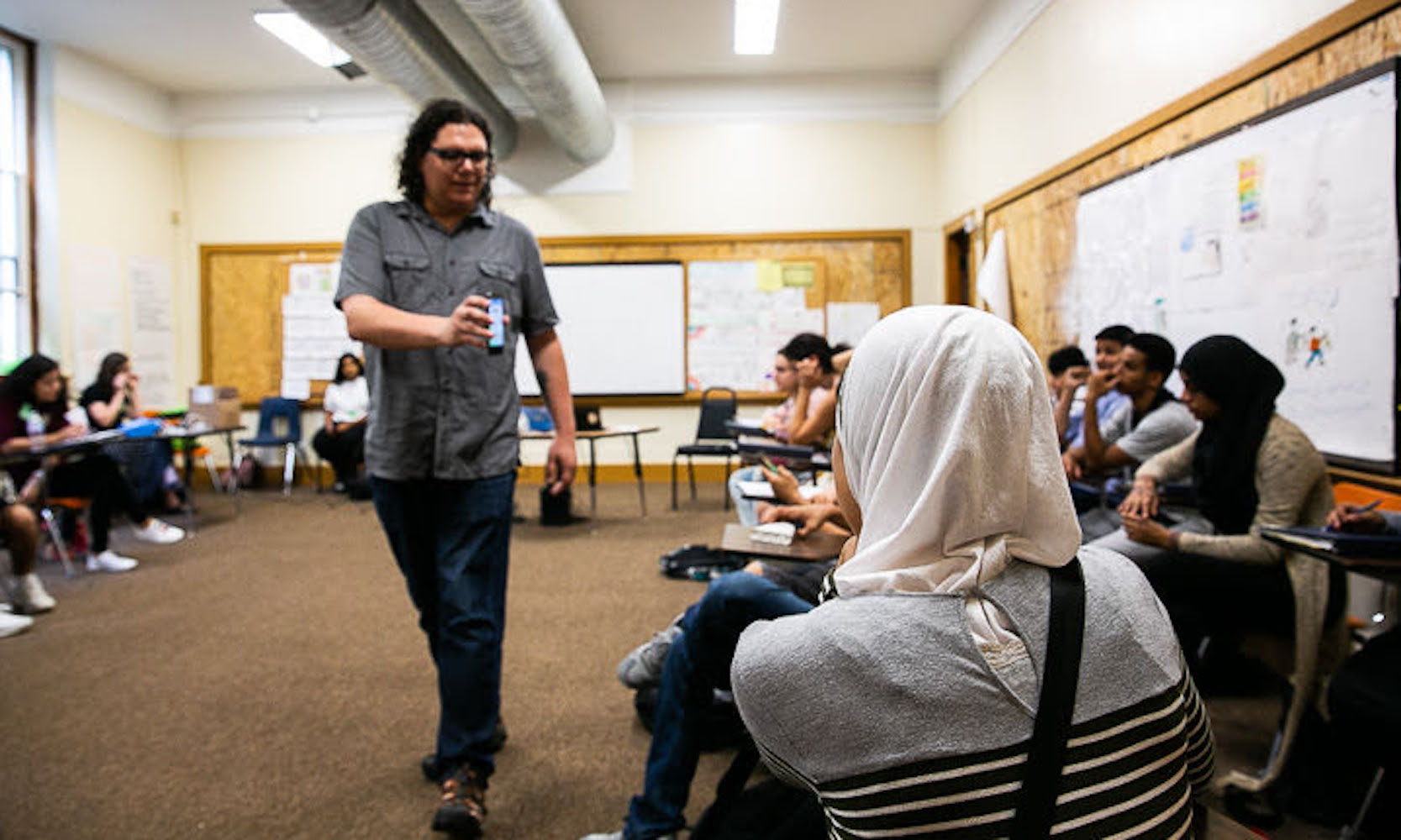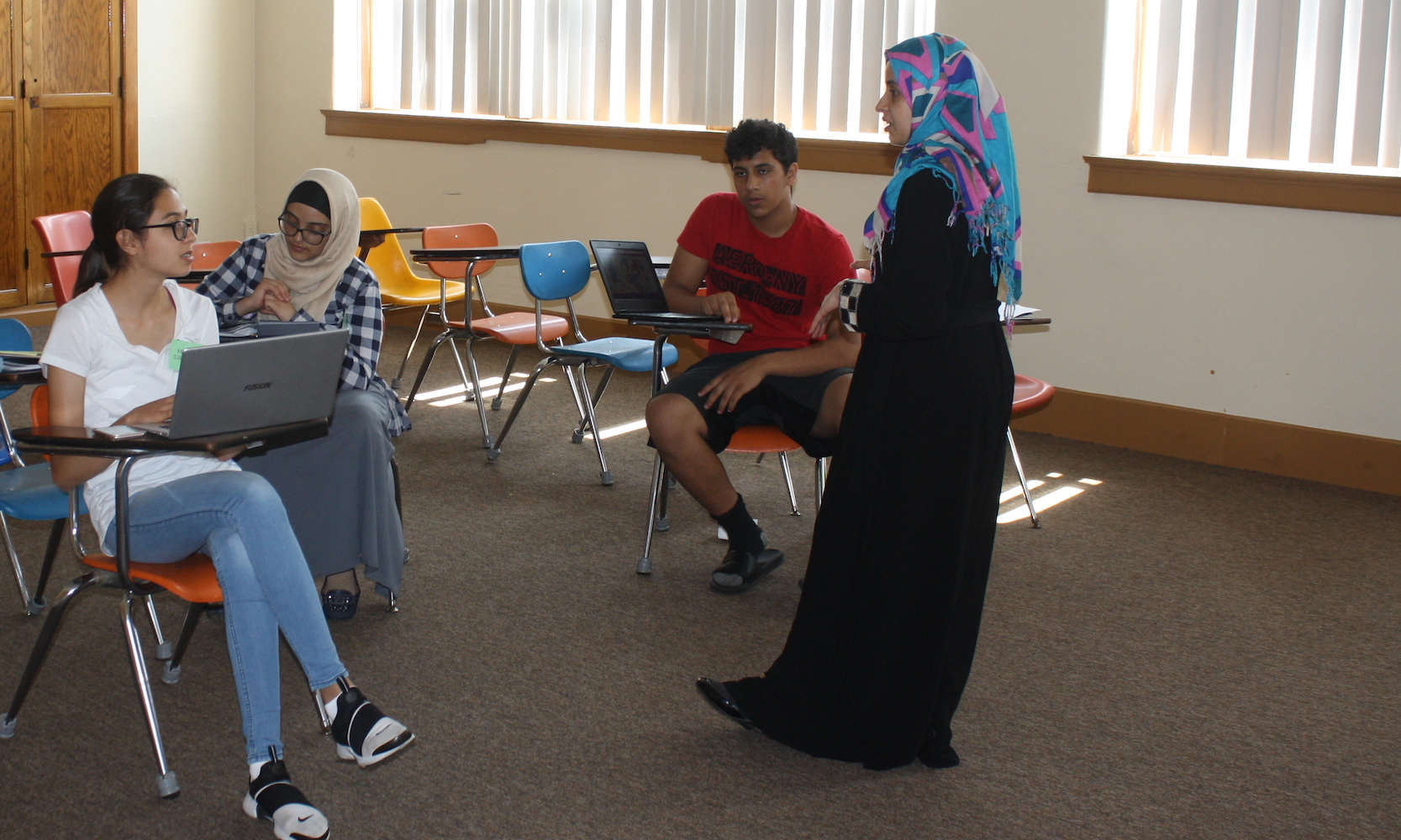“We worked to connect what the students learned as the sessions progressed,” said Sampson, public health assistant professor. “For example, in the second session, Great Lakes Environmental Law Center’s Nick Leonard explained MDEQ’s air monitoring and its limitations that can cause gaps in air pollution data. Then in the fourth session, Justin Schell, an expert in citizen science from the Shapiro Design Lab, talked about how we can use handheld air sensors that send data to our phones to understand patterns of air pollution. These tools cannot be calibrated with expensive and sophisticated MDEQ monitors, but you can use them to learn about local air pollution and advocate accordingly for increased monitoring in hotspots, for instance.”
Price and Sampson also showed the high school students how to find Dearborn-specific data and how to put that information in plain language so a larger population could more easily understand.
Price, sociology assistant professor, said the program allowed for 20 students, chosen through strong essays expressing interest in environmental justice and an emphasis was placed on equal distribution of Dearborn neighborhood representation. Because of the large number of applicants, they hope to have future EHRA academy sessions.
“We surveyed the participating students before and after the EHRA academy to assess their knowledge and how likely they were to participate in community environmental justice work. The results showed a large increase in knowledge and in advocacy activities,” Price said. “In addition to running this academy again, we also plan to follow up with these 20 participants in subsequent years to see if there’s a lasting effect.”







